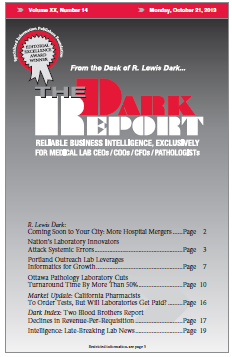CEO Summary: Pathologists at Ottawa Hospital not only must handle a large volume of specimens regularly, but are experiencing a 14% per year growth in the number of specimens. Last year, when the average turnaround time for a case was nine days, the pathology department embarked on a series of Lean and process improvement projects. …
Ottawa Pathology Lab Cuts Turnaround Time By More Than 50% Read More »
To access this post, you must purchase The Dark Report.


